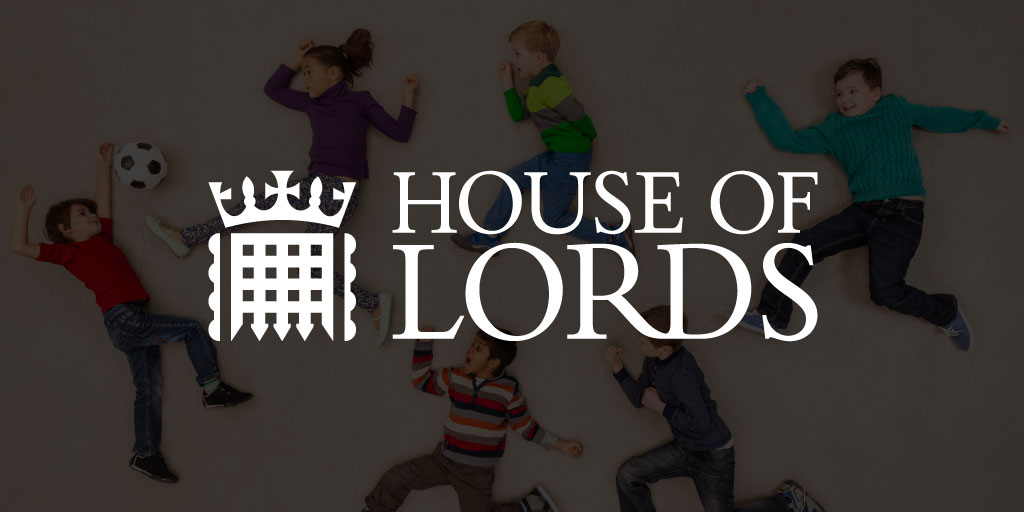Last month (December 2021), the House of Lords released its recommendations for the future of PE and school sport. The committee worked with organisations and stakeholders from across the spectrum, examining some key areas that affect public engagement with sport and physical activity.
The report references the significance of Sport England’s 10-year plan and the cross-departmental strategy published by the DCMS, Sporting Future: A Strategy for an Active Nation. Stakeholders from across the industry were consulted in a coordinated effort to meet targets that are detrimental to national recovery. The following guide outlines some of the key areas of the committee’s recommendations for the activities industry.
The importance of physical literacy
In accordance with mandated targets for exercise levels for children, the committee’s response to physical literacy is underpinned by the learning of simple motor skills such as balance, jumping, pushing, and pulling. The committee supported these skills as they are integral to young people’s progression through PE and school sport, determining them as ‘crucial to ensure that [they] develop…a love of movement’. [p. 32- 34]
Sport for Development – Social Prescribing & Criminal Justice
Social prescribing has increased in prominence, partly due to medical interventions needed to cope with the pandemic. Community referral as it is also known, allows health professionals to refer people for non-clinical services that could improve physical and mental health and wellbeing. This creates an opportunity for the activities industry to impress the importance of their services in offering a variety of outcomes. They called on local commissioning groups to consider the development of a local register of organisations suitable for social prescribing for medical practitioners.
In the Autumn Budget, the sport and recreation industry noted that the significance of their work had not been fully realised by the Budget. Among others, they stated the importance of providing rehabilitation and employability in the criminal justice system. The committee reasoned that sport could produce positive outcomes, and asked that the Home Office, The Ministry of Justice, and the Minister for Sport, Health & Wellbeing work in partnership to deliver coordinated services to those serving custodial sentences. [p. 43 – 47]
PE and School Sport
Schools have been pressured to meet various academic targets, many exacerbated by the pandemic. Targets for reading, writing, and arithmetic and the availability of resources have reduced PE instruction to a minimum. Youth Sport Trust’s Alison Oliver commented that weekly 2-hour PE lessons of 2 hours had often been replaced by ‘extra maths or because the hall is being used’.
Many teachers feel incapable of teaching PE confidently with few dedicated study hours built into their training. PE classes are not necessarily inclusive or welcoming environments, with some students suffering discriminatory abuse. As they get older, girls also become acutely aware of having fewer opportunities to engage in a range of sports as compared to boys.
The committee determined that PE should be designated as a core subject and that the DfE should establish adequate time, resources, and ‘expected standards for the delivery of PE and school sport’, the quality of which should be assessed by Ofsted. The government must work closely with teacher training providers to ‘ensure adequate time is allocated on teacher training courses to build their knowledge and assess their understanding.‘ Whilst the committee confirmed that children should feel comfortable whilst playing sport, they advised only that the DfE should include guidance for participation in a wide range of sports. [p. 49-55]
PE and Sport premium
The PE and Sport Premium provides schools with a fund of £320 million for them to plan their PE and school sport provision for the year. In 2020, funding remained unconfirmed into June 2020 preventing many schools from organising adequate provision. The fund can be used for external providers, but all funding must have evidentiary proof provided. Fewer than 60% of sample schools provided were in accordance with regulations.
The committee determined that the PE and school sport provision must be guaranteed to at least the current amount and allocated in advance to enable schools to plan ahead. Similarly, coaching provisions must be monitored by DfE, with guidance for finding external providers, stressing the importance of supporting teachers in building confidence in their own skillset.
Whilst there has been some disinclination for the use of external providers, there is however clear evidence in the plan for their benefit. For coaching companies, providing a breakdown of costs to help schools better evidence their use of PESP would give the service its USP. Better yet, such partnerships have the capacity to be deepened with the understanding that this will strengthen their teaching staffs’ knowledge base. [p. 55-59]
School Facilities & Active Environments
Opening school spaces for public and private usage would unlock new revenue streams for schools, increase their capacity after school activity and unlock more than 50% of the nation’s grass pitches and 76% of sports halls. The committee advised a collaborative approach would be necessary to speed up the implementation in order to tap the potential of these resources.
Stakeholders had advised similar collaborative measures for increasing active travel. British Cycling for example has remarked at how often housing developments are created that were only accessible by car. Similarly, that development should include a provision for children to play outside safely, an area that has decreased in comparison to The Netherlands, which factors in this approach.
The committee pointed out that the ‘levelling up’ agenda as profiled in the Autumn Budget, provided a platform to invest in active travel infrastructure. Such investments should be completed with the understanding that the design of buildings, homes and public spaces should increase physical activity and the enjoyment of local areas. [p.64-69]
To download the plan, see here.



